Overview
Name Of Trek: Pindari Glacier
Region: Uttarakhand
Duration: 10 Days
Level: Moderate
Group Size: 8 to 10 Person
Distance: 110 km
Altitude: 4150 mts/13612 ft
Pickup Point: Kathgodam
Drop Point: Kathgodam
Best Season: Mid March to mid June
Base Camp: Loharkhet
Post Monsoons: September to October
Brief ITINERARY
Day-1
Kathgodam – Bageshwar -Loharkhet.
Altitude- 1760mts
Distance - 210km drive
Time taken - 6-7hrs.
Overnight stay in tents/guest house
Arrive at Kathgodam Railway station at 7AM. You will be greeted by Himveer Tour & Trek personnel at the railway station. Start drive towards Bageshwar via Almora. Have breakfast midway. Explore the town of Bageshwar and visit the old temple at the confluence of Surya amd Gomti River. After having lunch drive towards Loharkhet. You will reach Loharkhet by evening. Evening tea and dinner at the camp. Overnight stay in camp/guest house.
Day-2
Loharkhet to Dhakuri.
Altitude- 2,680 mts
Distance- 10 kms
Time taken - 5hrs
After having healthy breakfast at the camp, start trekking towards Dhakuri which is easy but quite steep and passes through dense forest. Follow the trail from Dhakuri Khal for few kilometres and you will reach Dhakuri in an about 5 to 6 hours. The snow capped peaks of Southern wall of Nanda Devi Santury is visible from Dhakuri Khal. Dinner and overnight stay at Dhakuri
Day-3
Loharkhet to Dhakuri.
Altitude - 2,210 mtr
Distance - 9kms
Time take taken - 5hrs
After having breakfast trek towards Khati village which is situated on the banks of Pindari River and also the biggest village that comes across on the trek to Pindari Glacier. {Charge your batteries on payment basis at the KMVN rest house which is 500mts ahead of Khati Village} Overnight in Khati
Day-4
Loharkhet to Dhakuri.
Altitude- 2,575mtr
Distance - 11kms
Time take taken - 6hrs
Today we will trek along Pindari River. Have tea and maggi at small tea shops along. Overnight at Dwali.
Day-5
Dwali to Phurkia
Altitude- 3250 mtr
Distance- 5km
Time Taken- 3hrs
Phukarianis a picturesque place blessed with natural beauteousness. The 5km trek from Dwali to Phukria is steep crossing the frozen stream and dwindling forests. There is a beautiful waterfall just before Phukria where you can rest for a while. Overnight at Phukria
Day-6
Phurkia - Zero Point – Phurkia - Dwali
Altitude- 3660 mts
Distance- 15kms
Time taken - 7hours.
Get ready to witness the spectacular view of mighty Himalayan range while trekking from Phukria to Zero Point of Pindari Glacier. Get up early to start early if you want to spend some time at Zero point. After exploring the Pindari Glacier trek back to Dwali. Overnight stay at camp.
Day-7
Dwali to Kafni Glacier
Altitude- 3,860mts
Distance- 12km
Time taken -6hours.
To the left of Pindary valley lies Kafni Glacier from where Nanda Kot and Nanda Bhanar , two of the major Himalayan peaks are visisble. The place has its own charm and allures with solitude terrain it presents.
Day-8
Kafni Glacier to Dwali
Distance- 12 kms,
Time taken - 5hrs
After exploring the beauty and surrounding areas of Kafni Glacier, trek back to Dwali. Return via Bayaligar with trail gradually decending to Dwali. Dinner and overnight stay at the campsite.
Day-9
Dwali – Khati - Dhakuri
Distance- 20kms
Time taken 7-8hrs
After breakfast, trek back to Khati and then to Dhakuri on the same day.
Day 10 - Dhakuri –Loharkhet – Almora – Khatgodam
Distance- 10kms trekking+210kms drive
Time taken 4hrs+7hrs
After breakfast follow the downward trail all the way to Loharkhet. Drive to Kathgodam via town of Almora. TREK ENDS HERE
DETAILED ITIERNARY
Day 1 - Kathgodam – Bageshwar -Loharkhet
Altitude - 1760mts
Distance1-210km drive,
Time taken - 6-7hrs.
Overnight stay in tents/guest house
Arrive at Kathgodam Railway station at 7AM. You will be greeted by Himveer Tour & Trek personnel at the railway station. Start drive towards Bageshwar via Almora. Have breakfast midway. Explore the town of Bageshwar and visit the old temple at the confluence of Surya amd Gomti River. After having lunch drive towards Loharkhet. You will reach Loharkhet by evening. Evening tea and dinner at the camp. Overnight stay in camp/guest house.
Day 2 - Loharkhet to Dhakuri
Altitude- 2,680 mts
Distance- 10 kms ,
Time taken - 5hrs .
After having healthy breakfast at the camp, start trekking towards Dhakuri which is easy but quite steep and passes through dense forest. Follow the trail from Dhakuri Khal for few kilometres and you will reach Dhakuri in an about 5 to 6 hours. The snow capped peaks of Southern wall of Nanda Devi Santury is visible from Dhakuri Khal. Dinner and overnight stay at Dhakuri
Day 3 - Dhakuri to Khati
Altitude- 2,210 mtr
Distance- 9kms ,
Time taken - 5hrs .
After having breakfast trek towards Khati village which is situated on the banks of Pindari River and also the biggest village that comes across on the trek to Pindari Glacier. {Charge your batteries on payment basis at the KMVN rest house which is 500mts ahead of Khati Village} Overnight in Khati
Day 4 - Khati to Dwali
Altitude- 3250 mtr
Distance- 5km ,
Time taken - 3hrs .
Phukarianis a picturesque place blessed with natural beauteousness. The 5km trek from Dwali to Phukria is steep crossing the frozen stream and dwindling forests. There is a beautiful waterfall just before Phukria where you can rest for a while. Overnight at Phukria
Day 6 - Phurkia - Zero Point – Phurkia - Dwali
Altitude- 3660 mts
Distance- 15kms
Time taken - 7hours.
Get ready to witness the spectacular view of mighty Himalayan range while trekking from Phukria to Zero Point of Pindari Glacier. Get up early to start early if you want to spend some time at Zero point. After exploring the Pindari Glacier trek back to Dwali. Overnight stay at camp.
Day 7 - Dwali to Kafni Glacier
Altitude- 3,860mts
Distance- 12km
Time taken -6hours.
To the left of Pindary valley lies Kafni Glacier from where Nanda Kot and Nanda Bhanar , two of the major Himalayan peaks are visisble. The place has its own charm and allures with solitude terrain it presents.
Day 8 - Kafni Glacier to Dwali
Distance- 12 kms,
Time taken - 5hrs
After exploring the beauty and surrounding areas of Kafni Glacier, trek back to Dwali. Return via Bayaligar with trail gradually decending to Dwali. Dinner and overnight stay at the campsite.
Day 9 - Dwali – Khati - Dhakuri
Distance- 20kms
Time taken 7-8hrs
After breakfast, trek back to Khati and then to Dhakuri on the same day.
Day 10 - Dhakuri –Loharkhet – Almora – Khatgodam
Distance- 10kms trekking+210kms drive
Time taken 4hrs+7hrs
After breakfast follow the downward trail all the way to Loharkhet. Drive to Kathgodam via town of Almora. TREK ENDS HERE.
Cost Terms
COSTS INCLUDES
All transfers in shared taxi right from PICKUP POINTS to DROP POINTS
Permits and Entrance fees.
Accommodation in tents on share basis during trekking.
All meals, { from BASE CAMP to BASE CAMP} Breakfast, Packed Lunch, Tea, Coffee, Sneaks, Soup, Dinner, after dinner hot Chocolate, lemon tea. etc!
All camping gear including tents and sleeping mattress. Liner,Kitchen tent, Dining tent and toilet tent.
Good Experience Hindi/ English guide, cooks and porters, mules.
Insurance of Himveer Tour & Trek staff.
COSTS EXCLUDES
Personal Insurance.
Personal toiletry Items
Personal expenses and tips
Personal Medicine kit
CMeals during transit.
Charges of mules/poerters carrying extra luggage. (Rs 300/per bag payable to Himveer Tour & Trek Personnel at the base camp )
How to Reach
By Air :-
Jolly Grant Airport is the airport serving Dehradun, located about 48 km from the Haridwar. There is a daily flight from Delhi for Dehradun.
By Train:-
From Delhi -DDN NZM AC EXPRESS (2205).
From Kolkata- Doon Express (13009)
From Mumbai- Dehradun Express (19019)
From Chennai- Dehardun express (12687)
By Road:-
By road, Haridwar is well connected with major destinations of the country.
NH72 connects Haridwar to Nahan (125 km) to the north-west, and thereon to Panchkula, Chandi¬garh and Shimla.
NH 72 terminates at Dehardun, which is at 54km from Haridwar.
Haridwar is located at a distance of 235 km from Delhi
NH72A links Haridwar to NH58 at Roorkee (35 km) and thereon south to Meerut (170 km) and Delhi (235 km).
There is regular bus service from Delhi for Haridwar from Delhi's ISBT Kashmere Gate
Himveer Tour & Trek GUIDELINES
DO’S AND DON’TS ON A TREK
1.Alcohols or any other intoxicating products "STRICTLY PROHIBHITED" during the trek.
2.Always pay heed to the trek guides or instructors.
3.Try not to leave the group under any circumstances.
4.Avoid trekking during the nights as it is extremely dangerous.
5.Avoid using earphones as that might hinder your hearing.
6.Do not participate or encourage littering of the places in any form.
7.While visiting the local villages and tourist sites, obey the local guidelines and instructions.
8.Do not harm or interrupt the local sentiments of the places.
IMPORTANT:
Your safety is of paramount concern while travelling with Himveer Tour & Trek.
Please note that your leader has the authority to amend or cancel any part of
the itinerary if it is deemed necessary due to safety concerns.
Since adventure entails travelling in remote mountainous regions, we cannot guarantee that we will not deviate from it. Weather conditions, health condition of a group
member, unexpected natural disasters, etc., can all contribute to changes in the itinerary. The leader will try to ensure that the trip runs according to plan, but please be prepared to be flexible if required
Fixed Departure
SUMMER:
March
10, 11,12,17,18,19,21.24,25,26
April
1,2,4,7,8,9,11,13,14,15,16,22,23, 28,29,30
May
6,7,10,13,14,20,21,27,28
June
3,4,10,11
POST MONSOON
September
2,3,5,7,8,14,15,18,19,20,21, 22,26,28,29
October
1,2,5,7,8,14,15,18,19,20,21, 22,26,28,29
Himveer Tour & Trek Importants Links
Himveer Tour & Trek Basic trek Gear Checklist for client
A) A good quality rubber sole with mid sole and ankle support (Medium or high ankle) shoe. Click here
Himveer Tour & Trek Medical Form For Thr Client
Himveer Tour & Trek treks organised by SHRIDHANT EXPEDITIONS (OPC) PVT LTD. take place in some remote and less-developed regions, without means of rapid evacuation, Click here
Frequently asked questions(FAQs)
Here are answers to a list of generic questions which are asked to us on any treks. We have tried to answer most of them and this list of questions keeps growing with time. If you still have doubts, Contact Us us over phone or email to clear your doubts. We will be happy to help !!
Toilets On Trek: There will be a separate toilet tents. For a bigger group ( more than 8 trekkers ), separate toilet tents for men and women will be provided to keep up with the timings. The toilets will be a dry toilet where a pit will be dug and will contain a hump of mud outside. You can use wet tissue papers. After you finish your business, you need to cover the dump with the mud outside. A small shovel will be kept for the purpose. You should not use water in the toilet pit. When we shift camps, we will ensure that the pit is well covered and the area is clean. For tea house treks, toilets are well maintained by the owners.
We would be carrying all of the camping and technical equipment and the cost of it will be included in the package price. If you had requested a customized trek package, this will depend on what you have asked for.
For a detailed generic list of what to carry on a trek, follow the link click here






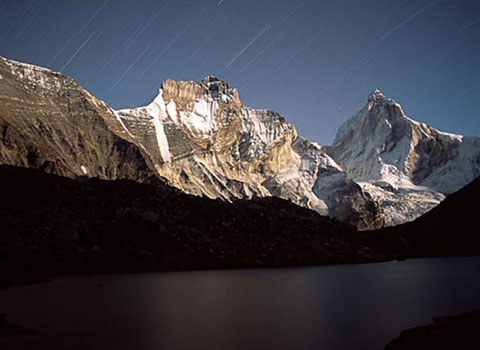
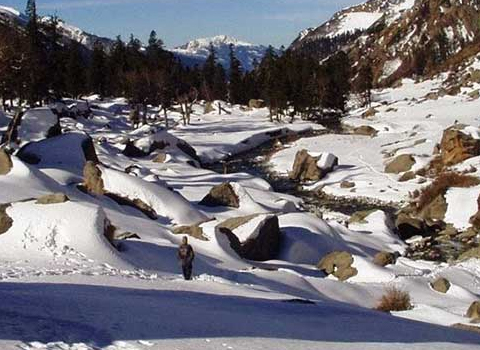
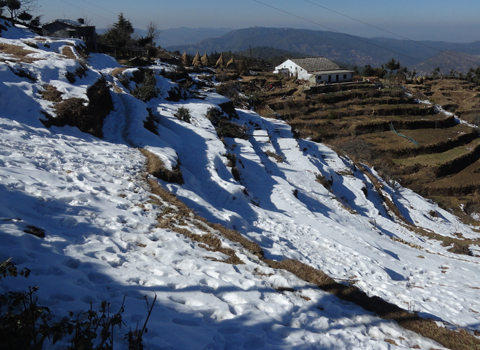
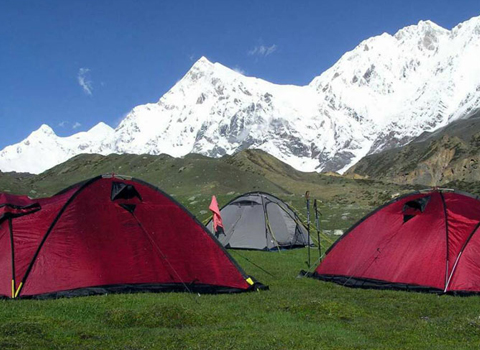
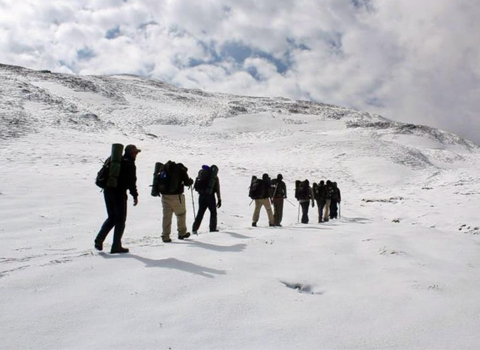
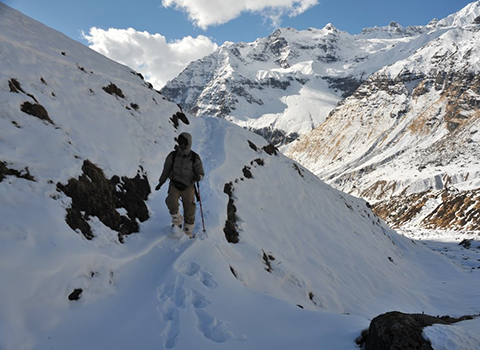
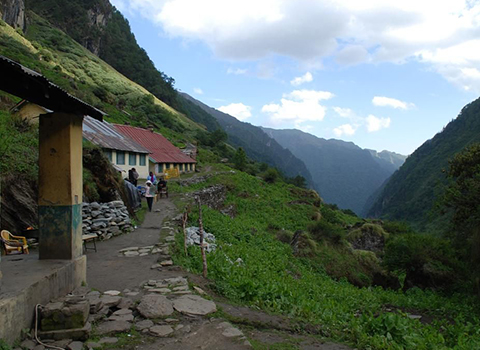
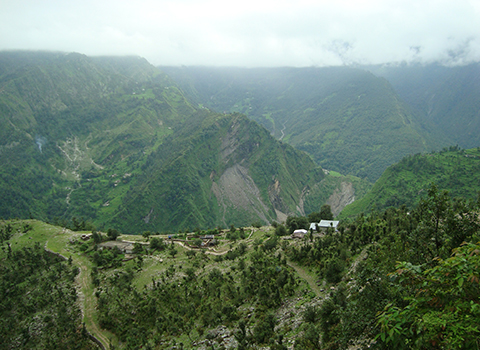
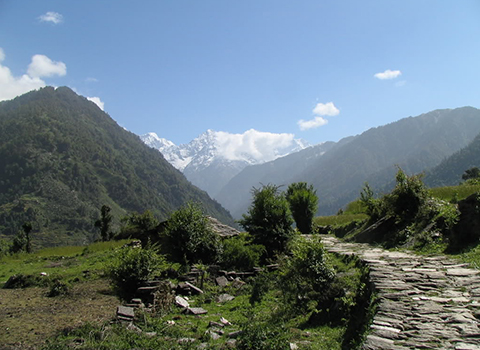
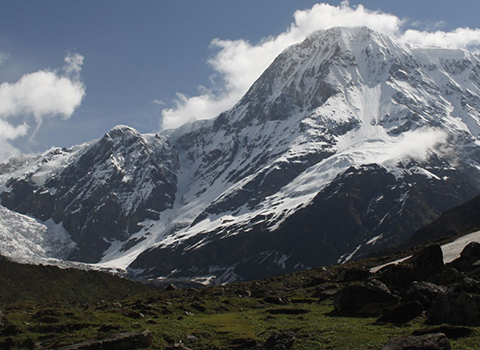
.jpg)
.jpg)
.jpg)
.jpg)
.jpg)
.jpg)
.jpg)
.jpg)
.jpg)
.jpg)
.jpg)
.jpg)
.jpg)